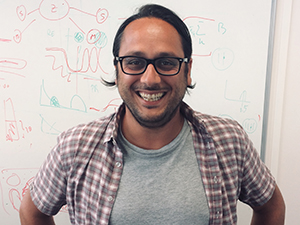A recent study on an aggressive type of brain cancer has significantly advanced the understanding of the spectrum of tumours that occur in teenagers and young adults (TYA).
High-grade gliomas (HGGs) are understudied in this age group, which typically includes patients aged 15 to 24. The World Health Organization’s classification of these tumours only distinguishes between paediatric-type and adult-type tumours, not recognising any specific TYA HGG subtypes.
This gap in knowledge is due to a lack of published clinical, pathological and molecular data from TYA patients, and it represents a barrier to providing the optimal treatments for people in this age group living with HGGs.
A research team led by scientists at The Institute of Cancer Research, London, set out to overcome this obstacle, with the long-term aim of improving future outcomes among TYA patients.
The study was funded by multiple groups, including the Academy of Medical Sciences, the British Neuropathological Society, the Pathological Society of Great Britain and Ireland, Cancer Research UK, CRIS Cancer Foundation and the Ollie Young Foundation. The findings were published in the journal Clinical Cancer Research.
The challenge of studying a rare cancer
Gliomas are tumours that develop from glial cells in the brain or spinal cord. Those that are described as high-grade show characteristic microscopic features, tend to behave more aggressively and have a very poor outcome. Although HGGs represent the most common form of malignant brain cancer overall, they still only affect about five in every 100,000 people each year. They can develop in patients of all ages, including infants, children, teenagers and adults.
Existing large research studies have often included TYA HGG cases, but there are very few studies that have focused specifically on HGGs in this age group alone – partly because they are rare.
For the new study, the researchers collaborated with both national and international partners to help them gather data from 207 patients aged 13–30 from across the globe. In doing so, they created one of the largest cohorts of TYA cases ever published in scientific literature.
The importance of molecular profiling
A key area of cancer research is molecular profiling, which involves taking a detailed look at the genetics of the disease to try to identify characteristics that cause the disease to develop, affect its growth or determine the optimal treatment approach.
Earlier studies had already identified molecular differences between adult and paediatric HGGs, but the team behind the current study wanted to see whether TYA tumours were distinct in any way.
As well as checking for mutations in each tumour’s genome, the researchers carried out a test called DNA methylation profiling. This means looking at the pattern of methyl groups – molecules made up of one carbon atom and three hydrogen atoms – added to the DNA molecule. Unlike genetic mutations, methylation does not change the sequence of DNA. However, it can affect the first step in gene expression, potentially causing an abnormal production or insufficiency of certain proteins.
Using various techniques, the researchers were able to show that HGG methylation subgroups in the TYA age group overlapped with those in both the paediatric and adult age groups, meaning that clinicians should not make assumptions about a patient’s cancer biology based on their age alone.
In addition, the researchers identified some subgroups that seem to be TYA-specific. Excitingly, they believe some of the genetic features they have identified may be targetable with existing medications.
Overall, the findings demonstrate the importance of carrying out DNA methylation profiling alongside genetic sequencing in each case of TYA HGG.
“Our findings will help the neuro-oncology community”
Joint senior author Dr Matthew Clarke, NIHR Academic Clinical Lecturer in the Glioma Group at The Institute of Cancer Research (ICR), said:
“It has been a real team effort to classify and characterise high-grade gliomas in the TYA population, and we are pleased that our findings will help the neuro-oncology community understand more about the spectrum of HGG subtypes among this age group.
“In particular, our finding that both paediatric and adult-type HGG occur in a wider range of patients than originally thought will be important to consider for future clinical trials.”
Rita Pereira, a PhD student in the Glioma Group and joint first author alongside Bioinformatician Yura Grabovska and Senior Bioinformatician Alan Mackay, said:
“Working on this project, it was fascinating to see the age distribution of these tumours, which highlights the need for all patients, no matter their age, to undergo molecular profiling so that we can better understand the distribution of the different tumour subgroups and their significance.
“Another benefit of carrying out this work is that it will provide more data that can be used in future research studies to understand more about the different subgroups, including how we can best treat them.”
Joint senior author Professor Chris Jones, Head of the Division of Cancer Biology at the ICR, said:
“Before this work, it was not clear whether there were subtypes specific to the TYA population, but this information is necessary if we are to maximise the opportunities for treatment for these patients.
“I am delighted that we have been able to further the understanding of HGG biology in this age group and look forward to exploring more about the different subgroups we have uncovered and their molecular features.
“High-grade gliomas are notorious for their poor outcomes, but we are hopeful that this avenue of detailed biological research will help lead to better targeted treatments in the future.”
.tmb-propic-md.jpg?Culture=en&sfvrsn=c25d2b2f_9)
 .
.
